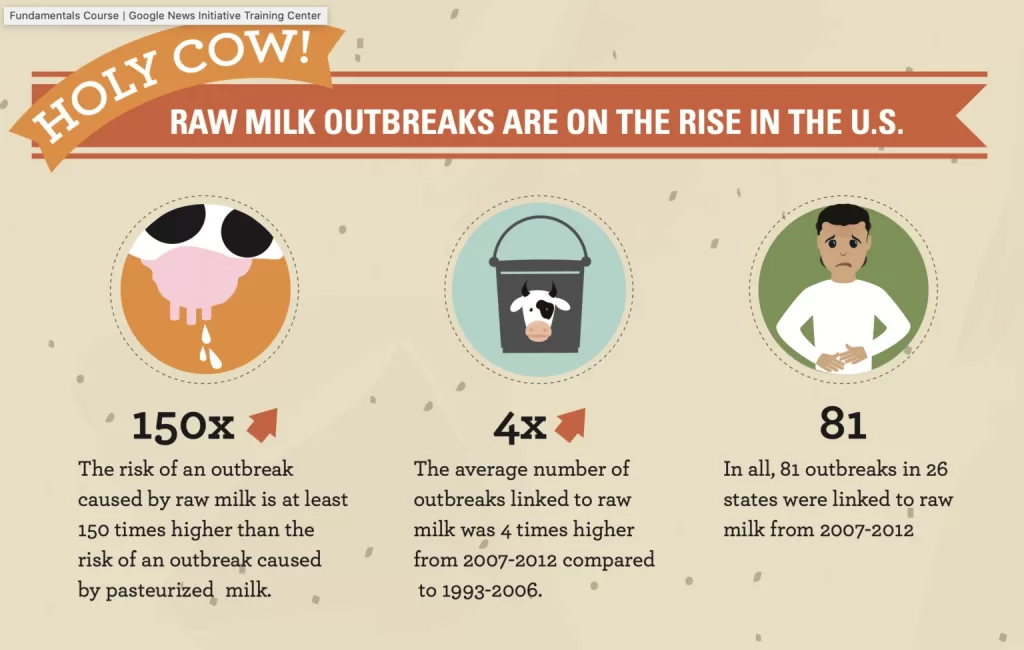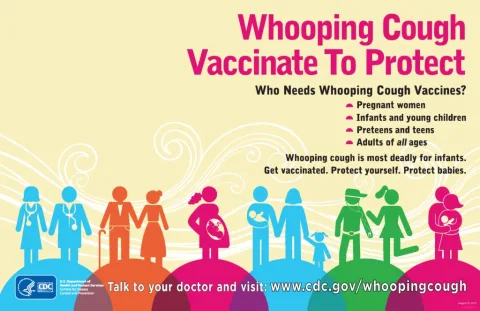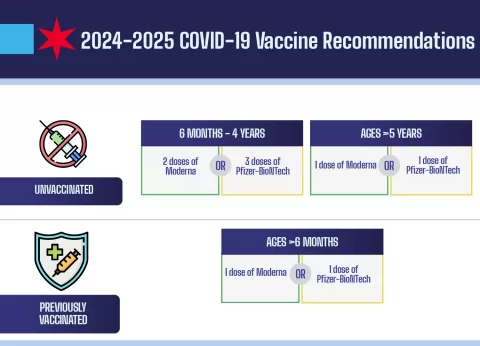Raw milk safety has become a significant public health concern, as recent reports illustrate the risks associated with consuming unpasteurized milk products. In northeast and central Florida, over 20 individuals have fallen ill due to Campylobacter and E. coli bacteria linked to raw milk consumption, with some requiring hospitalization. This alarming situation emphasizes the dangers posed by raw milk, particularly for vulnerable groups such as young children and the elderly. The Florida Department of Health has expressed concerns about the sanitary conditions at the farm involved in this outbreak, suggesting that the lack of regulation surrounding raw milk risks potential health threats. As pasteurization benefits highlight its ability to eliminate harmful bacteria, understanding raw milk safety is crucial in preventing serious infections and outbreaks.
When discussing the safety of unpasteurized dairy products, it’s essential to address the health implications associated with consuming raw milk. This form of milk, which is not subjected to pasteurization, poses risks due to the presence of harmful pathogens like Campylobacter and E. coli. Health authorities have linked numerous illnesses to such products, especially among children and immunocompromised individuals. By gaining insight into the dangers of unprocessed dairy, including potential outbreaks of bacterial infections, we can appreciate the vital role of pasteurization in protecting public health. Exploring alternative, safe dairy options is crucial for consumers keen on avoiding the complications tied to raw dairy consumption.
Understanding the Risks Associated with Raw Milk
Raw milk consumption poses significant health risks due to the potential presence of harmful bacteria such as E. coli, Campylobacter, and Salmonella. These pathogens can lead to severe gastrointestinal illnesses, with symptoms ranging from stomach cramps and diarrhea to more serious conditions like hemolytic uremic syndrome. Recent outbreaks, including the 21 cases in Florida, highlight the dangers of raw milk, particularly for vulnerable populations like children, pregnant women, and the elderly.
Studies have indicated that contaminated raw milk can lead to recurring outbreaks of foodborne illnesses. According to the Centers for Disease Control and Prevention, from 2009 to 2021, there have been over 140 reported outbreaks linked to raw milk, emphasizing the need for increased public awareness about the inherent risks. It is essential for consumers to understand that while raw milk is sometimes marketed for its health benefits, the dangers associated with bacterial infections far outweigh any potential advantages.
The Importance of Pasteurization Benefits
Pasteurization is a crucial process that involves heating raw milk to a specific temperature to kill harmful bacteria. This simple yet effective method has been proven to eliminate pathogens, making milk safer for consumption. The benefits of pasteurization cannot be overstated, especially in the context of preventing diseases caused by E. coli and Campylobacter infections. By pasteurizing milk, consumers significantly reduce the risk of foodborne illness, promoting better public health outcomes.
Moreover, pasteurization preserves the nutritional qualities of milk while ensuring safety. It not only prevents bacteria such as Campylobacter and Salmonella from thriving in milk but also extends the shelf life of the product. Public health officials advocate for pasteurization because it protects consumers from serious health complications linked to bacterial infections. In light of recent outbreaks from raw milk, it is imperative for consumers to choose pasteurized dairy products to safeguard their health and wellbeing.
Raw Milk Safety: Why Regulation Matters
The safety of raw milk is a pressing concern in the public health narrative, especially following recent cases of E. coli and Campylobacter infections linked to its consumption. Regulatory measures regarding raw milk are crucial, as the lack of stringent sanitary practices can lead to outbreaks, as seen in the reported 21 cases in Florida. These cases underscore the importance of enforcing stricter sanitation standards on farms that produce raw milk, even if it is technically legal to sell for animal consumption.
Proper regulation not only protects consumers but also ensures that farms adhere to sanitary practices that significantly minimize the risk of contamination. The Florida Department of Health pointed out that the number of illnesses stemming from this specific farm raises alarms about the sanitary conditions maintained. Advocating for regulations surrounding raw milk sales could reduce the prevalence of foodborne illnesses, safeguarding public health and protecting the most sensitive groups, such as children and the elderly.
Campylobacter Infections and Their Impact on Public Health
Campylobacter infections are one of the most common forms of bacterial food poisoning worldwide and are frequently associated with the consumption of raw milk. The symptoms of Campylobacter infections can be severe and include diarrhea, fever, and abdominal pain, which may lead to long-term health complications, particularly in young children and the elderly. Public health initiatives aim to raise awareness about these infections, emphasizing the importance of avoiding raw milk to prevent such illnesses.
The connection between raw milk and Campylobacter outbreaks necessitates a closer examination of dairy farming practices. It is essential to educate consumers on how raw milk can harbor these harmful bacteria, exacerbating the risk of infections. Furthermore, understanding the transmission and prevention strategies is imperative in reducing the incidence of Campylobacter infections linked to dairy products, ultimately protecting community health.
E. coli Outbreaks: Recognizing the Dangers of Raw Milk
E. coli outbreaks linked to raw milk consumption serve as a stark reminder of the potential dangers associated with unpasteurized products. Shiga toxin-producing E. coli (STEC) infections can result in severe health complications, including kidney failure and, in some cases, can be life-threatening. The recent outbreak in Florida, which has affected multiple individuals, particularly children, illustrates the grave consequences of consuming raw milk without understanding the associated risks.
Awareness and education are critical in preventing E. coli outbreaks. Consumers should be informed about the potential for bacteria contamination in raw milk and the serious health effects that can result from consumption. Public health campaigns aimed at educating consumers about the safe handling of dairy products and the benefits of choosing pasteurized milk can play a significant role in mitigating the risks of E. coli infections.
The Effect of Raw Milk on Vulnerable Populations
Vulnerable populations, including young children, pregnant women, and the elderly, are at a heightened risk of severe illness from consuming raw milk. For these groups, the consequences of contracting bacteria such as E. coli and Campylobacter can be particularly devastating, leading to hospitalization or long-term health issues. The Florida Department of Health’s report highlights the alarming reality of children being severely affected by the outbreak related to raw milk consumption, calling for heightened caution among caregivers.
Understanding the implications of raw milk consumption is critical in protecting these sensitive groups. Families should be educated on the risks associated with raw milk and the importance of choosing pasteurized alternatives. By focusing on the safety of vulnerable populations, public health campaigns can effectively reduce the incidence of raw milk-related infections and ensure healthier outcomes for at-risk individuals.
Sanitation Practices on Dairy Farms and Public Safety
Sanitation practices on dairy farms play a vital role in ensuring the safety of milk products. Following the recent outbreak of infections in Florida linked to a specific farm, there is an urgent need to re-evaluate sanitation protocols in places that sell raw milk. The Florida Health Department’s findings emphasize that insufficient sanitation can lead to serious public health threats, making it imperative for dairy farms to implement and adhere to stringent hygiene standards.
Proper sanitation reduces the risk of contamination and the subsequent transmission of harmful bacteria, such as Campylobacter and E. coli, into the milk supply. Consumers should be vigilant and aware of the conditions under which dairy products are produced, advocating for transparency in farming practices. As public health concerns grow, robust sanitation measures become increasingly important to protect consumers and prevent outbreaks from contaminated raw milk.
Differences Between Raw and Pasteurized Milk
Understanding the differences between raw and pasteurized milk is crucial for consumers making informed dietary choices. Raw milk is unprocessed and can contain various pathogens that pose health risks, while pasteurized milk undergoes a heating process that eliminates harmful bacteria. The pasteurization benefits become evident when considering the historical data that links raw milk to numerous outbreaks of bacterial infections, such as E. coli and Campylobacter.
Choosing pasteurized milk significantly lowers the risk of foodborne illnesses, making it a safer alternative for families and individuals concerned about health outcomes. The public should be encouraged to educate themselves about these differences through reliable sources and health campaigns that promote the consumption of pasteurized dairy products over raw milk, particularly after recent outbreaks highlighted the dangers associated with unpasteurized options.
Consumer Awareness and Raw Milk Safety
Consumer awareness regarding raw milk safety is key in preventing foodborne illnesses. With the stirring news of outbreaks related to raw milk consumption, it’s vital that individuals understand the risks involved. Information on the dangers posed by pathogens such as E. coli, Salmonella, and Campylobacter must be made accessible, guiding consumers to make safer choices regarding milk consumption and the risks of raw products.
Effective public health strategies should be implemented to raise awareness about the dangers of raw milk and its implications for personal health. These strategies should also emphasize the importance of seeking pasteurized alternatives, particularly for vulnerable populations who face increased risks. By fostering greater awareness, we can collectively work towards preventing future outbreaks and ensuring the safety of our food supply.
Frequently Asked Questions
What are the safety risks associated with raw milk consumption?
Raw milk poses various safety risks primarily due to the presence of harmful bacteria, such as Campylobacter and E. coli. Consuming raw milk can lead to severe gastrointestinal infections and illnesses, especially in vulnerable populations like children, pregnant women, and the elderly.
How does pasteurization help improve raw milk safety?
Pasteurization significantly improves raw milk safety by effectively eliminating harmful bacteria, including Campylobacter, E. coli, Salmonella, and Listeria. This process ensures the milk is safe for human consumption and reduces the risk of severe bacterial infections.
What bacterial pathogens are commonly found in raw milk?
Common bacterial pathogens found in raw milk include Campylobacter, E. coli, Salmonella, Listeria, and Brucella. These bacteria can cause serious health issues, particularly gastrointestinal infections, making raw milk a risky choice.
Why are young children at higher risk when consuming raw milk?
Young children are at higher risk from consuming raw milk due to their developing immune systems, making them more susceptible to bacterial infections such as those caused by Campylobacter and E. coli present in raw milk.
What are the symptoms of infections caused by raw milk bacteria?
Infections caused by bacteria found in raw milk typically lead to gastrointestinal symptoms such as vomiting, diarrhea, and stomach cramps. Some infections, particularly those from E. coli, can escalate to serious complications like hemolytic uremic syndrome, potentially resulting in kidney failure.
What regulations exist regarding raw milk sales in Florida?
In Florida, selling raw milk for human consumption is illegal; however, it can be sold as animal feed. This regulation limits the oversight of sanitary practices, raising concerns about the safety of raw milk products.
How many outbreaks of illnesses related to raw milk have been reported recently?
From 2009 to 2021, there were 143 confirmed or suspected outbreaks of enteric diseases related to raw milk consumption reported to the Centers for Disease Control and Prevention, highlighting the ongoing safety concerns associated with raw milk.
What measures can consumers take to ensure raw milk safety?
To ensure raw milk safety, consumers should be aware of the source of the milk, understand the risks associated with raw milk consumption, and ideally choose pasteurized milk products to reduce the risk of bacterial infections.
What is the potential impact of raw milk bacteria on public health?
Raw milk bacteria can have significant impacts on public health, as evidenced by recent outbreaks causing severe infections and hospitalizations. These incidents underscore the importance of pasteurization and strict regulations around dairy products.
What preventative steps can be taken against raw milk risks?
Preventative steps against raw milk risks include avoiding its consumption, supporting pasteurization of milk products, and advocating for stricter regulations to ensure safe dairy practices.
| Key Point | Details |
|---|---|
| Recent Outbreak in Florida | 21 people have been affected by E. coli and Campylobacter linked to raw milk consumption. |
| Hospitalizations | 7 individuals required hospitalization due to serious complications. |
| Source of Contamination | The cases are linked to raw milk from a specific farm, unnamed for privacy. |
| Regulations on Raw Milk | Raw milk sales for human consumption are illegal in Florida; however, it can be sold for pet consumption. |
| Affected Demographics | 6 affected individuals are children under 10 years old. |
| Public Health Concern | Sanitation practices at the source farm raise concern due to a high number of cases. |
| Health Risks | Campylobacter and STEC can lead to gastrointestinal issues and severe complications such as kidney failure. |
| At-Risk Population | Higher risk for infants, young children, pregnant women, elderly, and immunocompromised individuals. |
| Statistics | 143 confirmed or suspected outbreaks linked to raw milk were reported from 2009 to 2021. |
Summary
Raw milk safety is a critical public health issue, as evidenced by recent events in Florida where 21 individuals fell ill due to bacteria associated with raw milk consumption. These cases highlight the dangers of consuming unpasteurized milk, particularly the potential for severe health complications, especially in vulnerable populations like young children and the elderly. Public awareness and adherence to food safety regulations are paramount to preventing similar outbreaks in the future.
The content provided on this blog (e.g., symptom descriptions, health tips, or general advice) is for informational purposes only and is not a substitute for professional medical advice, diagnosis, or treatment. Always seek the guidance of your physician or other qualified healthcare provider with any questions you may have regarding a medical condition. Never disregard professional medical advice or delay seeking it because of something you have read on this website. If you believe you may have a medical emergency, call your doctor or emergency services immediately. Reliance on any information provided by this blog is solely at your own risk.








